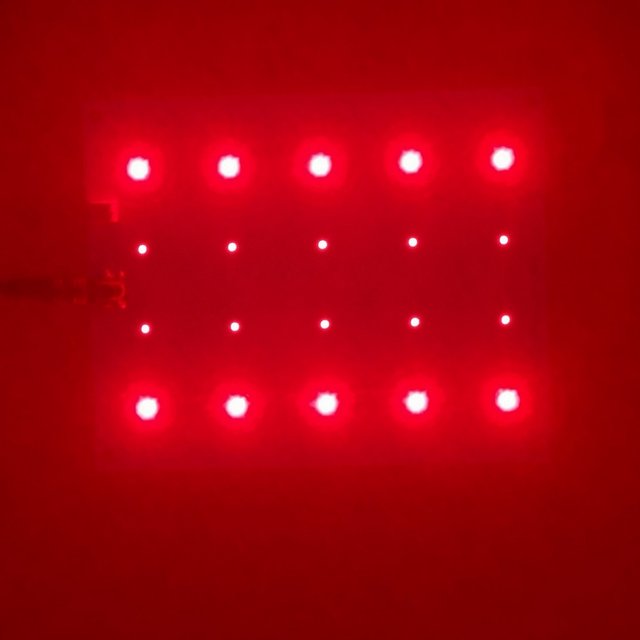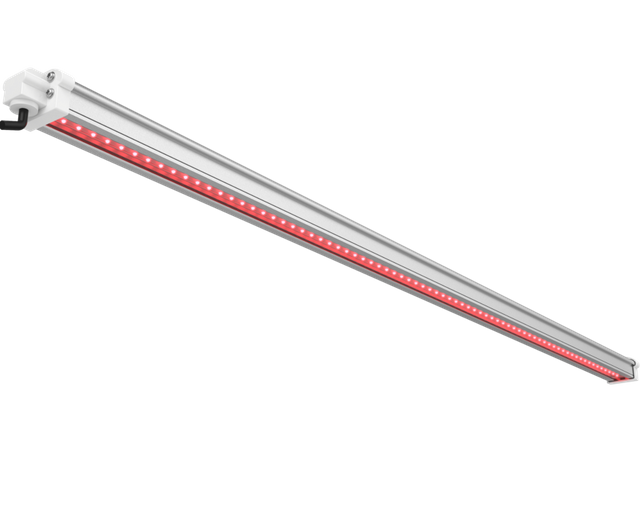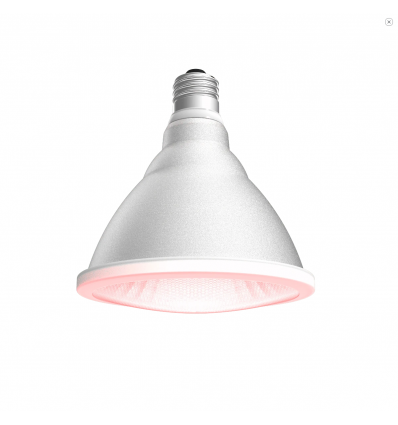Recent advancements in LED grow lights have made it an exciting time to be an indoor grower. With cutting-edge spectrum variable lights, you can change the quality, flavor, potency, and yield of your crop just by adjusting the light spectrum over the course of the growth cycle.
Red light inspires flowering. Blue light ensures tighter internodes in vegetation and increases the concentration of oils and resins during flowering. And a blast of UVB in the finishing stage ensures heavy trichome production and greater potency.
But what about far-red light? How does this less-discussed end of the light spectrum affect your crop?
Whether you’re growing at home or setting up a commercial operation, it’s important to understand how far-red light can stunt growth and to be aware of the one time when a blast of far-red will serve you well.
First, let’s clarify what we’re talking about when we talk about far-red light.
What is Far Red Light?
Most of the information you have about managing the light spectrum for your plants probably relates to PAR or photosynthetically active radiation. PAR refers to the range of solar radiation (400–700 nm) that plants can use to create energy through photosynthesis. Generally speaking, this is the same range of radiation that is visible to the human eye.
While PAR is extremely important to plant growth, the overall development of your crops also depends on wavelengths that fall outside of the PAR range. UV, for example, cannot be used for photosynthesis, but plants can still sense it and respond to it. In fact, UV can be damaging for plants, just as it is for humans, and your crops defend themselves against those harmful rays by producing trichomes.
Far-red light also falls outside the PAR range. With a wavelength of 700–850 nm, far-red falls just between red and infrared light. Interestingly, your plants are extremely sensitive to the difference between red and far-red light, and the balance between the two can give your crop very specific instructions on how to grow.
Far-red light is used in photosynthesis
FR has long been considered to have minimal input in photosynthesis and is excluded from the definition of Photosynthetically Active Radiation (PAR; 400 to 700 nm). It is because the photosynthetic efficiency of monochromatic FR light sharply declines with the wavelength. FR is largely reflected and transmitted by plant leaves, and only about 30% is absorbed.
Several recent studies have shown that far-red photons interact with shorter wavelength photons to increase the efficiency of photosynthesis. Zhen and Bugbee (2020) have studied the effect of FR on whole plant photosynthesis for 14 different crop species. They concluded that adding far-red photons to a spectrum of shorter wavelengths (e.g. broad white spectrum) caused an increase in canopy photosynthesis equal to adding additional light from PAR range (400–700 nm) of the same intensity. The effect was wavelength-dependent. The authors postulated that radiation between 700 and 750 nm should be included in the definition of Photosynthetically Active Radiation (PAR).
How does it work
The phenomenon is not new and is known as the Emerson effect. Robert Emerson (1957) found out that plants exposed simultaneously to the light of shorter and longer wavelengths than 680 nm, have much more efficient photosynthesis than if they are exposed to only shorter or longer wavelengths separately. It happens because photosynthesis is driven by two photosystems that work in synergy. It can be compared to two pump mechanisms used to transport energy. The first pump or photosystem uses red photons to pump up electrons on a higher level. The second pump or photosystem uses far-red photons to pump up electrons even further. High energy photons are used to synthesize basic building biochemicals which can be used to make different substances e.g. sugars. The efficiency of the system is highest when both pumps work together in a balanced way. Using laser diodes to obtain extremely narrow wavebands, Zhen et al. (2018) found that photons from 703 to 731 nm tended to be more efficient at increasing photochemical efficiency than photons below 703 nm or above 731 nm FR. Photons of wavelength above 752 nm are not effective in enhancing photochemical efficiency as they are no longer used by the first photosystem due to low photon energy and absorption.
Best Far Red Light Recommend For You
ECO Farm 30W CREE RED 660nm+ FAR RED 730nm Supplemental Lighting Quantum Board
Features:
The 730nm Far Red Lightbar is designed for plant canopy lighting and provides additional red energy outside of normal PAR (400–700nm). The Far Red Lightbar covers you to a 5'x 12” area with very even intensity at 30” above the canopy. We recommend 2 units per 4x4 grow space. Separate timers/switches are recommended to control the light interval. Use 660nm deep red and far-red 730nm growth. Facts have proved that buds can grow bigger, fatter, brighter in color, and help your canopy absorb a higher intensity of white light, thereby significantly increasing yield. When short-day plants are exposed to far-red light, it will encourage them to bloom. Therefore, many growers will use far-red lights (such as 730 nanometer LED strips) for a few minutes to two hours before the lights are turned off. This will speed up flowering.
Features:
The FGI 730nm strip is the longest dedicated far-red light start strip on the market. It will completely cover the 4-foot wide planting tray. The 730nm far-red light bar is specially designed for auxiliary ceiling lighting and can provide extra red energy beyond the normal PAR (400–700nm). The far-red light strip covers an area up to 5 feet x 2.5 feet and has a very uniform intensity 30 inches above the canopy. Each light bar is pre-connected with an 8-foot power cord and a 110-volt plug and is independent. It is recommended to use a separate timer/switch to control the light interval. It is believed that far-red light produces a competitive response in plants. In addition, growers are now focusing on manipulating the so-called Emerson effect.
Horticulture Lighting Group HLG Flowering Initiator Far Red Bulb
Features:
This lighting consumes 15W and can cover approximately 150 x 150cm.
This bulb is not Plug & Play, you will need a 26mm medium socket (E26).
Under normal conditions, it can take up to 2 hrs to change the Phytochrome state from Pfr to Pr. Flower Initiator helps change Phytochrome state from Pfr to Pr within minutes. This helps finish the flowering cycle faster and also allows for a 13/11 cycle.
How Your Plants Perceive Far Red Light
Your plants perceive red and far-red light with the help of photoreceptors called “phytochromes.” Now, phytochromes have both an active form (far-red absorbing) and an inactive form (red absorbing). Your plant switches between active and inactive phytochromes depending on how it perceives the red to the far-red ratio in its light source. You’ll see this ratio referred to as “R: FR.”
To put it in more direct, less scientific terms: when your plants perceive a higher ratio of far-red light, they essentially flip a switch that cues certain biological functions.
And what are those functions?
Well, that’s where things get interesting.
Plants Respond Differently to Far Red Throughout the Growth Cycle
The effect far-red has on your plant changes depending on the maturity level of your crop. We’ll get into the details in a moment, but the headline is this.
When your plants “see” more far-red light than red light, they think they’re in the shade.
It’s that simple. Everything we explain from here on out essentially comes down to that one idea. If you pump up the far red levels, your crops think they’re starving for sunlight.
Here’s what that does to their development:
The Effects of Far Red Light in Germination
This one is simple to explain. Seeds need sunlight to grow. Far-red light makes plants think they’re not getting sunlight. As a result, too much far-red on your seedlings may prevent germination altogether.
The Effects of Far Red Light in Vegetation
If you’re getting stretch in the vegetation stage, too much far-red could be the culprit.
Because far-red makes your plants think they’re in the shade, they keep reaching upwards in search of the sun. Their leaves grow longer and wider and their stems elongate. The unhappy result is a long and lanky plant that’s too weak to hold up the healthy flowers you’re hoping to cultivate.
Another important downside of far-red is that it decreases chlorophyll and anthocyanins, both of which are responsible for your plants’ vibrant color. You also get a decrease in antioxidants, which protect both your plants and the people who consume them against free radicals.
Long story short: you cannot hope to turn out a decent product if your R: FR in vegetation is heavy on the far red.
The Effects of Far Red Light in Pre-Flowering
Okay, here’s where it actually gets fun.
If you need your plants to get a move on with the flowering or you just want to increase yields, a temporary blast of far-red works wonders. Why?
Using blasts of Far Red at the end of the day — 10 minutes while the lights as on and then to minutes while the normal lights are on — can keep plants flowering with less than the 12 hours of darkness that are normally required. Many growers claim that by using this technique they can get up to 20% more production per year by shortening the daily growth cycle this way. 20% of additional production can be huge! Once again, this is very strain-dependent. Different strains start flowering at different lengths of the dark period.
Another trick used by some growers is to use all far red at the end of the day and then wake the plants up with deep red in the morning. This puts the plants to sleep and wakes them up more efficiently maximizing daytime photosynthesis and nighttime metabolism.
Conclusion
There’s no doubt about it: indoor cultivation is a science. And as grow light technology advances, growers have more and more opportunities to play the scientist. Nurturing your crop is no longer about a flip of the switch — HPS lights on, HPS lights off. Now, with LED technology, you can guide your plants through their entire growth cycle, manipulate their chemical and flavor profiles, and — most importantly — ensure they grow up healthy and robust.


